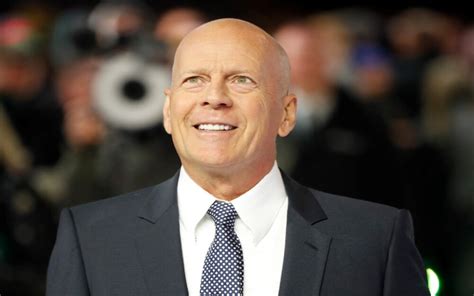Explore Zack Snyder’s early life, career beginnings, directorial style, and impact on comic book movies, including his breakthrough with ‘300’. Learn about his influence in the film industry.
Early Life and Education
Contents
Zack Snyder was born on March 1, 1966, in Green Bay, Wisconsin. He was raised in a Christian Science household and attended Camp Tosebo, a youth camp in Michigan. Later, he moved to Connecticut and graduated from Greenwich High School. During his teenage years, Snyder developed an interest in photography and filmmaking, which eventually led him to pursue a degree in Fine Arts from the Heatherley School of Fine Art in England.
After returning to the United States, Snyder attended the Art Center College of Design in Pasadena, California, where he graduated with a Bachelor of Fine Arts in Film. It was during his time at the Art Center that Snyder honed his skills in visual storytelling and developed an eye for cinematic composition.
Throughout his educational journey, Zack Snyder was exposed to various art forms, which heavily influenced his later work in filmmaking. His early life and education played a significant role in shaping his artistic sensibilities and laying the foundation for his future career in the film industry.
Career Beginnings in Film Industry
Zack Snyder’s career in the film industry began with his work as a director of television commercials. He quickly gained recognition for his visually stunning and innovative approach, catching the attention of major studios and producers. His unique style and ability to bring a fresh perspective to his projects set him apart from other aspiring filmmakers.
In 2004, Snyder made his feature film debut with the highly acclaimed remake of the classic horror film Dawn of the Dead. The movie was a commercial success and established him as a promising director with a keen eye for detail and a knack for creating tension and suspense on screen.
Following the success of Dawn of the Dead, Zack Snyder continued to garner attention in the industry with his distinct visual storytelling and ability to breathe new life into established genres. His early career in the film industry showcased his talent for crafting compelling narratives and bringing his unique vision to the screen.
In the years that followed, Snyder continued to solidify his reputation as a director to watch, leading to his eventual breakthrough as a visionary filmmaker with a distinct voice and style that would shape the future of the industry.
Breakthrough with ‘300’
Zack Snyder’s breakthrough in the film industry came with the epic historical war film ‘300’, which was released in 2007. The film, adapted from the graphic novel by Frank Miller, was a visually stunning portrayal of the Battle of Thermopylae, where King Leonidas and 300 Spartans fought to the death against Xerxes and his massive Persian army.
Snyder’s use of visually striking imagery, slow-motion sequences, and intense action scenes garnered widespread attention and critical acclaim. The film’s unique visual style and innovative use of green screen technology set it apart from other historical epics, earning Snyder a reputation as a visionary director with a distinct cinematic flair.
With ‘300’, Snyder proved that he had the ability to bring larger-than-life stories to the big screen in a way that captivated audiences and pushed the boundaries of visual storytelling. The film’s success solidified Snyder’s position as an influential filmmaker in the industry and set the stage for his future projects.
‘300’ not only showcased Snyder’s directorial talent but also solidified his reputation as a filmmaker who could successfully blend elements of action, drama, and historical storytelling into a visually stunning and compelling cinematic experience. The film’s impact reverberated throughout the industry, leading to a resurgence of interest in stylized historical epics and cementing Snyder’s status as a director to watch.
Directorial Style and Influences
Zack Snyder, known for his visually stunning and stylistic approach to filmmaking, has a distinct directorial style that has left an indelible mark on the film industry. His use of slow-motion, dynamic camera angles, and intense color grading sets his films apart from others in the same genre. Snyder’s influences come from a variety of sources, including comic books, graphic novels, and art history. He has cited the works of Frank Miller and Alan Moore as major influences on his visual storytelling style.
Additionally, Snyder has also drawn inspiration from classic films, such as Blade Runner and The Matrix, incorporating their atmospheric lighting and dystopian themes into his own work. His use of visual effects and CGI is also heavily influenced by his passion for video games, resulting in a unique blend of cinematic and gaming aesthetics in his films.
One of Snyder’s most notable traits as a director is his ability to seamlessly merge different visual mediums, creating a signature style that is both mesmerizing and thought-provoking. His use of non-linear storytelling and symbolic imagery adds depth and complexity to his films, inviting audiences to engage with the narrative on a deeper level.
Overall, Zack Snyder’s directorial style and influences have had a resounding impact on the world of cinema, shaping the way audiences perceive and experience visual storytelling. His innovative approach to filmmaking continues to inspire and influence aspiring filmmakers, cementing his status as a visionary director in the industry.
Impact on Comic Book Movies
Zack Snyder’s impact on comic book movies is undeniable. With his distinctive visual style and storytelling approach, Snyder has reshaped the way audiences perceive and experience superhero films. His bold and dynamic cinematography, coupled with his thematic depth, has elevated the genre to new heights.
One of the most significant contributions that Snyder has made to comic book movies is his ability to capture the essence of iconic characters and bring them to life on the big screen. From his interpretation of Superman in Man of Steel to his depiction of the Justice League in Batman v Superman: Dawn of Justice, Snyder has reinvigorated these beloved heroes for a contemporary audience.
Moreover, Snyder’s emphasis on moral ambiguity and the psychological complexities of superheroes has added a layer of realism and nuance to the genre. By exploring the ethical dilemmas and internal struggles of these larger-than-life figures, he has humanized them in a way that resonates with audiences on a deeper level.
In addition to his visual and thematic impact, Snyder has also reshaped the narrative structure of comic book movies. His nonlinear storytelling and unconventional plot devices have challenged traditional storytelling conventions, pushing the boundaries of what superhero films can achieve.
Overall, Zack Snyder’s impact on comic book movies has been monumental. His bold visual style, thematic depth, and innovative approach to storytelling have redefined the genre, setting a new standard for future superhero films to come.












